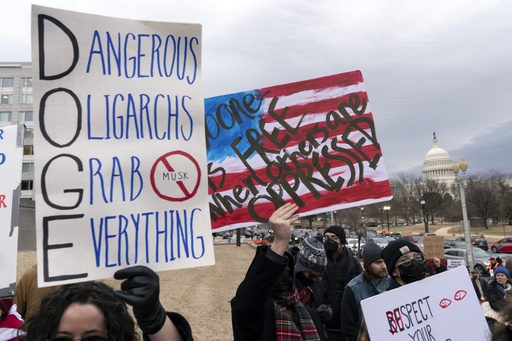
WASHINGTON — The latest employment report revealed that U.S. employers added only 143,000 jobs in January, while the unemployment rate decreased to 4% as the year began. This information paints a picture for the initial job report of Donald Trump’s second term in office, indicating that he has taken over a labor market that is stable but not particularly remarkable. Job creation has notably slowed down from the significantly higher gains seen in previous months — such as 263,000 in November and 307,000 in December. Economists had anticipated a rise of approximately 170,000 jobs for January.
For most Americans, job security remains relatively high, yet those seeking employment may find the process increasingly difficult as the labor market shifts away from the expansive hiring that characterized 2021-2023. Hourly wages increased by 0.5% from the previous month and by 4.1% compared to January 2024, a bit higher than what experts predicted, which may be a cause for concern among those focused on controlling inflation at the Federal Reserve. Furthermore, the Labor Department made adjustments to the November and December payroll figures, increasing them by an additional 100,000 jobs.
Economists Carl Weinberg and Mary Chen from High Frequency Economics reacted to the revised numbers by stating that they “see no reason for alarm about the economy’s robustness as indicated by today’s employment report.” However, they also noted that the solid hiring trend over the recent months implies that the Federal Reserve would likely not be rushing to lower interest rates again after having made three cuts in the previous year.
In specific sectors, healthcare companies added 44,000 jobs, slightly below their average of 57,000 for 2024, while retailers increased their workforce by 34,000. The government sector contributed a total of 32,000 new positions. On the downside, the mining industry saw a reduction of 8,000 jobs.
Looking ahead, uncertainties loom on the horizon. A federal judge recently placed a temporary halt on President Trump’s initiative to incentivize federal workers’ departures, although an ongoing hiring freeze that was enacted on January 20 poses a potential drawback for job growth, according to economist Bradley Saunders from Capital Economics. The freeze’s full effects will likely be evident in later employment reports, as it was implemented after the January figures had been compiled.
Concerns are also rising regarding Trump’s threats of initiating a trade war, particularly after he instituted a 10% tariff on imports from China. His focus on Canada and Mexico, the two most significant trading partners of the U.S., has persisted, as he momentarily paused a planned 25% tariff, providing a 30-day period for negotiations. Trump cites these countries’ failure to adequately address the issues surrounding undocumented immigration and fentanyl trafficking into the U.S. Additionally, he intends to impose tariffs on the European Union, alleging unfair trade practices that resulted in a significant deficit for the U.S.
These tariffs, which are ultimately borne by American importers—often passed down to consumers—could reignite inflation. While inflation has decreased from the highs of 2022, it remains above the Fed’s 2% target. If tariffs lead to increased prices, the Fed may reconsider or delay anticipated interest rate cuts this year, which could negatively impact economic growth and job creation.
The employment sector has already begun to lose its vitality, with American payrolls rising by 2 million last year—a decline from 2.6 million in 2023, 4.6 million in 2022, and a record-setting 7.2 million in the post-lockdown economy of 2021. Additionally, there is a trend showing a decrease in job postings, with monthly openings falling from a peak of 12.2 million in March 2022 to 7.6 million in December, maintaining a historical perspective that is still quite positive.
As market conditions soften, worker confidence in their capability to obtain better salaries or working environments through job changes is waning. The number of people voluntarily leaving their jobs has dropped significantly from an all-time high of 4.5 million in April 2022 to just 3.2 million in December, indicating a return to levels seen before the pandemic.
Lastly, the Labor Department’s routine annual revisions disclosed that job growth over the period from April 2023 to March 2024 had not met initial expectations, with 589,000 fewer jobs created than originally reported. Earlier preliminary estimates suggested that the adjustments could have revealed an even larger discrepancy of 818,000 jobs.

